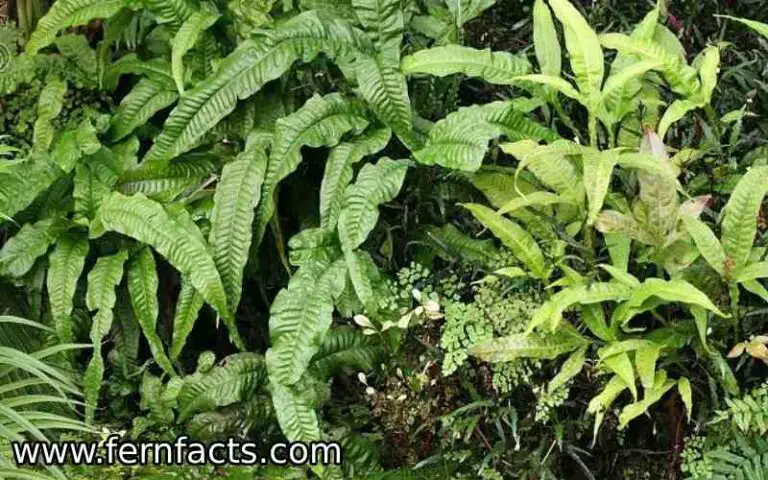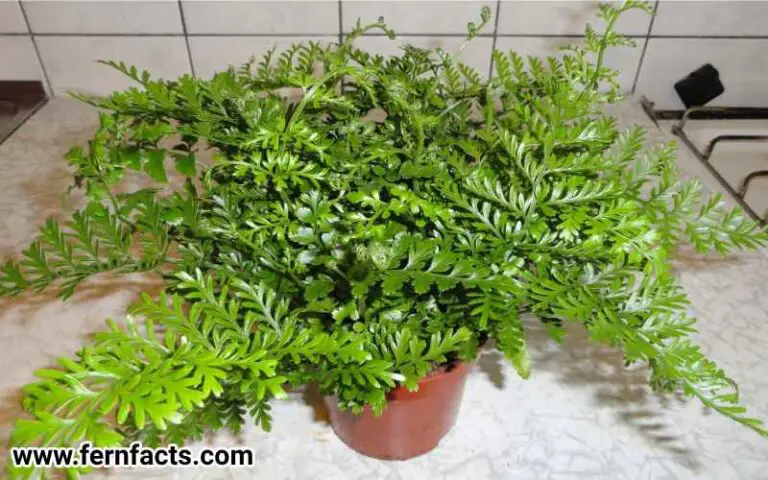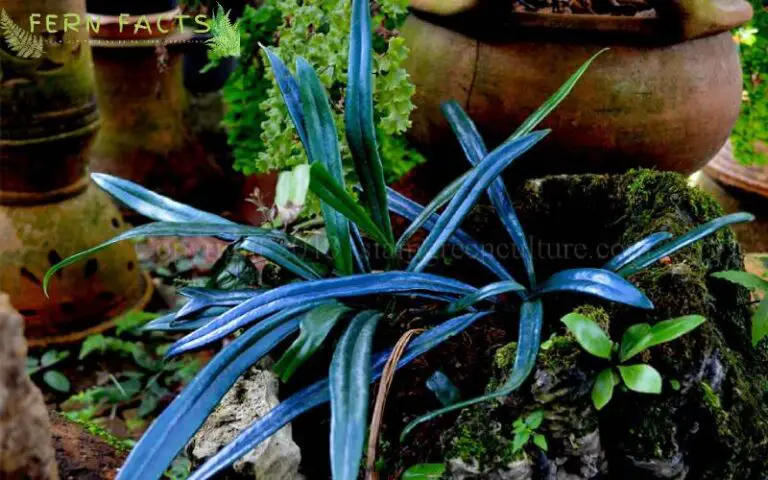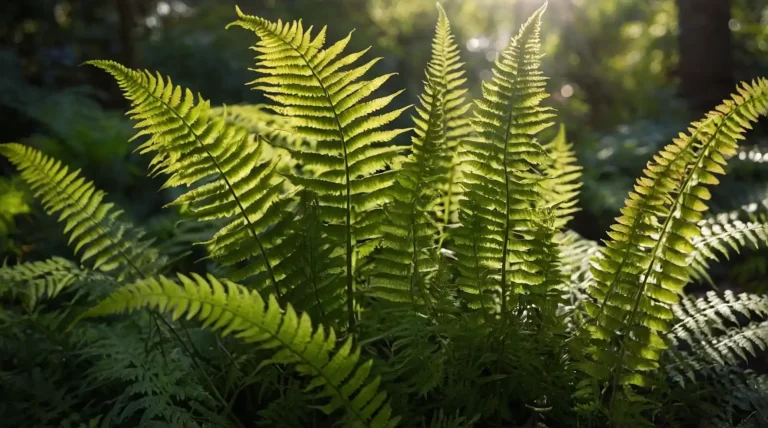Best Easy to Grow Ferns for Northern California
Ferns are the most beautiful plants to have for any gardener. However, if you live in Northern California, then Northern native ferns would be one of the easy growing plants for you to grow at your house.
Hereby, in this article, I will demonstrate a list of Northern California Native ferns along with their characteristics. Later on, I’ll give you some general tips and care to maintain your Northern California ferns in your house.
Since they are low maintenance plants, you can effortlessly plant these ferns at your house and glorify the beauty of your house. So let’s delve into the topic.
Best Ferns for Northern California
Not all ferns can be grown in Northern soil because of several reasons like atmosphere environments, soil texture, etc.
However, these are the few ferns that you can grow in Northern California. Here are those:
Western Sword Ferns
- Botanical name: Polystichum munitum
- Common names: Sword fern, western sword fern
- Plants: Deciduous plants
- Native Region: North America
- Shade requirements: partial or full sun
- Height: around 60 to 120 cm
- Soil type: Chalk, clay, loam and sand
- Soil pH: acidic, alkaline, and neutral
- Hardiness: 3 to 8
Western sword ferns are the native ferns that are widely used in California gardens. They are evergreen plans which are mostly native to North America’s forest areas.
You can also spot them in the Pacific coast, Alaska and Colombia as well. Since they are California ferns, they prefer moist coniferous woodlands that keep their soil well hydrated.
In the garden lands, Western sword ferns can grow up to 1.5 meters long by distributing their fronds up to 50 to 180 cm. They can tolerate several types of soil mixture until the soil is moist enough.
In order to grow these fern plants in your garden, you need to make acidic soil with rich humus and stones. This rich humus will maintain the soil’s nutrients and moisture.
Although, they can survive a certain period of dryness but not longer than it. You need to give them water by maintaining the moisture level in their soil and will grow best under the shade of any tree.
Common Bracken Ferns
- Botanical name: Pteridium aquilinum
- Plants: Deciduous plants
- Region: Eurasia, North America
- Habitats: coniferous woodlands
- Shade requirements: partial or full sun
- Height: around 1 meter
- Soil ph: acid, neutral or alkaline, moist well drained
- Soil type: sand, clay and loam
- Tolerance: drought
Common bracken ferns are other varieties of ferns that are highly distributed in the Northern California region.
These ferns are also one of the fern plants that has high excessive spreading habits in European countries which sometimes lead to toxicity to people and for the forest itself. However, because of their spreading habits, they are well-known ferns to grow in various lands, gardens, yards, and ground covers.
They are also the best choice for cottage gardens and woodland gardens. Note that These Northern ferns are very dangerous or toxic to cattle, sheep, or horses if they mistakenly consume or eat this.
Even these ferns can cause stomach cancer in humans or any other living things in the world. Nonetheless in ancient times, Japanese and Korean countries used to eat these ferns shoots for health benefits as well.
But they soaked it in water all night before eating it. However, it is still not recommended by most countries because of highlighting its negative side.
Ostrich Fern
- Botanical name: Matteuccia struthiopteris
- Common name: Ostrich fern
- Plants: Deciduous perennial
- Native range: North America, Europe, Northern Asia
- Native habitats: rich woodlands, low areas, swamps
- Shade requirements: partial or full shaded
- Height: around 3 to 8 ft
- Width: up to 3-5 ft
- Hardyzone: 3, 4, 5, 6, 7
- Soil: acidic soil (5- 6)ph, moist, organic matter
Ostrich ferns are also known as fiddlehead ferns or shuttlecock ferns in Northern California. Although the word derives from the ancient Greek word ostrich, it has become the most common name.
These Northern California ferns are deciduous plants that have crown shapes or colony-forming ferns. These ostrich ferns are also one of the ornamental ferns that has been used in California as ground cover.
Similarly these ferns also got awards from the Royal Horticultural Society’s Award of Garden merit. If you are planning to buy these ferns in your garden, then take e reminder since these are very expensive ferns.
Moreover, these plants also lose their fronds during the summer seasons where they lose their beauty. Especially during winter and cold seasons, if you don’t protect them, their situation will be more vulnerable.
Tassel Fern
- Botanical name: Polystichum polyblepharum
- Common name: Tassel fern, Japanese tassel fern, Korean tassel fern, bristle fern, Japanese lace fern
- Plant: Evergreen
- Soil type: sand, chalk, sand
- Soil ph: acidic, alkaline, neutral, well-drained
- Shade: partial to full shade
- Height: around 2 to 3 ft (60 cm – 90 cm)
- Tolerance: Deer tolerance and rabbit
- Hardiness zone: 6,7,8,
Tassel ferns are elegant evergreen Northern California plants that form the shape of a lance with their dark green fronds.
They can grow up to 2 to 3 ft tall and around 3 ft wide if they get ideal conditions to live. These ferns can be great for bed borders, underplanting or undercover plants, rock gardens, and woodland gardens in California.
Additionally, these ferns thrive for partial to full shade with a humid rich soil mixture. Besides, these tassel ferns also get the Garden Merit award from the Royal Horticultural Society because of their elegant qualities.
Be mindful that these tassel ferns are toxic to children and pets. So try to keep the plants away from any kind of incidents.
Giant Chain Fern
- Botanic name: Woodwardia fimbriata
- Common name: giant chain fern
- Family: Blechnaceae
- Plant type: perennial
- Native range: North America
- Light: partial sun, shaded place
- Soil: moist, well drained
- Soil ph: acidic ( 5 to 7)
- Height: around 3 to 8 ft
- Zone: 8,9,10
Giant Chain ferns are one of the largest ferns in North American countries along with Northern California. However, Washington state identifies these Chain ferns as one of the rare species because it’s very sensitive.
Because of their sensitive characteristics, they become vulnerable in numbers as well over the period of time. These ferns mostly prefer woodland areas in California.
In normal garden land, these ferns can grow up to 5 ft tall with soft green foliage. You also pair up these ferns with multi-shaded plants just to enhance and increase your garden’s look.
Since they are sensitive ferns, these ferns can’t tolerate frost. So, you better protect these Chain ferns. You can plant these under a protected and filtered shaded area where they can get a humid atmosphere which will lead them to thrive.
Leatherleaf Ferns
- Botanical name: Rumohra adiantiformis
- Common names: leather ferns, leatherleaf ferns, 7 weeks ferns, climbing shield ferns, iron ferns
- Plants: evergreen
- Family: Dryopteridaceae
- Native range: Southern hemispheres
- Shade requirements: partial to full shade
- Height: around 1 to 3 ft
- Width: around 4 to 5 ft
- Flower: non-flower
- Soil: acidic, neutral ph, well-draining
- Special features: low maintenance
- Hardiness zone: USDA 8,9,10,11
- Tolerance: Deer tolerance
Leatherleaf ferns are evergreen plants belonging to the wood fern family Dryopteridaceae that are also distributed in the northern California regions.
These ferns have bushy dark glossy green textured fronds and tufted appearance in their mature seasons. Apart from Northern California, these ferns are native to many tropical southern hemispheres like Brazil, Colombia, South Africa, the western Indian Ocean, and many more.
Usually, this Leatherleaf fern can grow up to 90 cm or 30 inches tall and 4 to 5 ft in width. Lately, these plants have become famous for indoor and outdoor decoration because of their glossy leathery shine which portrays the garden’s mesmerizing view.
Similarly, these Leatherleaf ferns are best for your ground cover, woodland gardens, or any shade gardens. You can easily grow and plant these ferns as they are very low-maintenance ferns.
Moreover, these ferns are deer-resistant and also give you a shady garden look.

General Tips and Care for Growing Northern California Ferns
Northern California ferns can do best in shady and sheltered places. Therefore try to plant your ferns in a partial to full shaded place so that they can get their ideal place to live.
Never let them have direct sunlight or sun exposure that can harm the fern, therefore try to give them dappled or filtered shade where they can bloom and thrive.
Similarly, all these native California ferns prefer moist well drained Soil. Thus, try to keep their soil moist and damp. Do not overwater or underwater the plants. It might harm your plant’s growth in several ways.
Also, choose e good mixture of soil with organic compost, peat moss, perlite, vermiculite, pine needles, and oak leaves to enrich the soil texture. This type of soil will hold the moisture in the soil and keep the plants well hydrated.
Although these Northern ferns don’t require much fertilization, still you can feed them before their growing seasons which can boost their growth from double to triple.
You can mix the same portion of NPK (10:10:10 or 16:16:16) in order to add nutrients in the soil. Since these ferns are low maintenance, they don’t need much care and attention.
However, you can still cut off their dead, damaged fronds to keep them in shape. By following this simple process, you can make your Northern native ferns thrive in your house.
Read More About Evergreen Northwest Ferns
Closing Note
In the final thought, Northern California is enriched with multiple varieties of fern species on their land.
All these native California ferns with different characteristics will give you wilderness appearances in your house.
Thus, by giving them their ideal condition, temperate, humidity, soil, and other maintenance you can grow and thrive these Northern California ferns very easily at your house.







